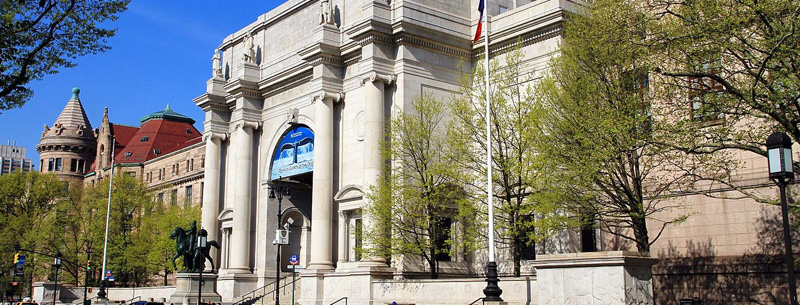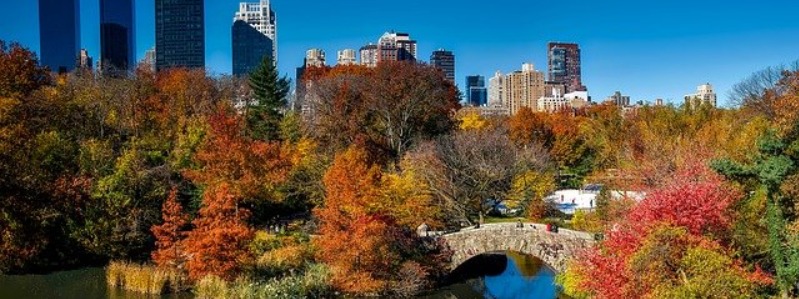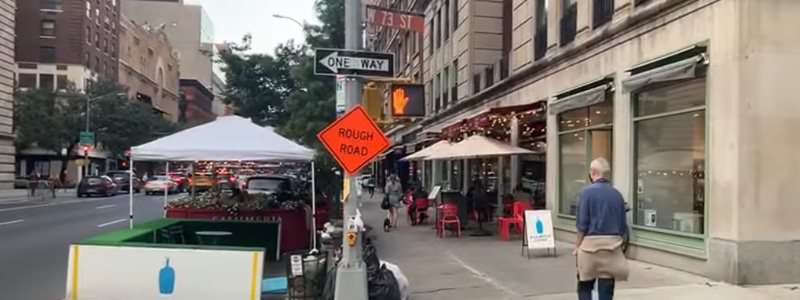Squeezed in between the lush Central Park and the slow-flowing Hudson River, the Upper West Side is one of the premier neighborhoods in Manhattan, New York City. The southeastern tip of the district is marked by Columbus Circle, which includes historic monuments and modern high-end shops in an indoor setting. The northern part of the Upper West Side is defined by Frederick Douglass Circle, which connects to 110th Street. Click to book your Upper West Side walking tour.
Sightseeing
Contents
The cultural heart and soul of the Upper West Side is the American Museum of Natural History. Established in the 1860s, this world-class museum boasts a growing permanent collection of more than 33 million items. Dinosaur fossils and ancient meteorites are some of the most precious specimens on display.

After learning about anthropology and biology, you could head to the New York Historical Society for some lessons on the Big Apple’s history. The Museum of Biblical Art, Nicholas Roerich Museum, and Children’s Museum of Manhattan is some niche museums that are located on the Upper West Side.
Running through most of the neighborhood, Riverside Park is one of the most visited green spaces in New York City. Opened in the 1860s, this historic park has a prime location along the shores of the Hudson River. The Grant National Memorial is perhaps the most notable attraction in Riverside Park, which is also lined with other smaller monuments that are dedicated to heroic citizens and famous leaders. Of course, no visit to the Upper West Side is complete without a stroll in Central Park, which has plenty of its own attractions.
Exploring the neighborhood
A great way to get to know the area for free is to take a walk down the blocks. Liberal-minded and usually well-to-do families make up the largest chunk of the population. Large five-story brownstones tower over tree-lined blocks making the neighborhood feel homey and prestigious. Nice blocks of brownstones are between 86th street to 67th street between Central Park West and Columbus Avenue.
Cheaper eats
Instead of buying a bland over-priced sandwich at either the Boathouse in Central Park or the Museum cafeteria, go to one of the corner delis. These neighborhood small-business staples have fresh ingredients, and good bread and are much cheaper and tastier. For a great lunch place just take it over to one of the shady benches in Central Park and enjoy it. Because you have saved so much money during the day, for dinner you can treat yourself to one of the delicious restaurants lining the streets.
Central Park
The most serene and beautiful parks are the biggest draw to the UWS and best of all it’s free. Spring and autumn are the best times to visit because of the lovely blossoms and colorful leaves. The southern end from 72nd street down to 59th street is usually the most crowded with tourists. There are many attractions like the Dakota, Strawberry Fields, Wollman Rink, and the carousel.

Avoid the horse-drawn carriage because they charge $60 or $70 for a slow, smelly and short ride that is just as fast (and much nicer) to walk. The horse carriages cause major ruts and damage to the road, not to mention all the horse manure that is dropped and smells terrible. Around 86th street is easy access to the Jacqueline Kennedy Onassis Reservoir where visitors can walk around the 1.5-mile path and see the skyline. In the northern end of the park near 110th street is the less-known Lasker pool that has free access in the summer for swimming and ice-skating in the winter.
Entertainment and Culture
The Lincoln Center for the Performing Arts serves as the focal point for entertainment on the Upper West Side. From the Metropolitan Opera and David Geffen Hall to the Alice Tully Hall, there’s no shortage of performing arts at this famous complex. If you prefer an intimate setting for live shows, then head to Symphony Space, Merkin Concert Hall, or the Beacon Theater.
Part of the prestigious Ivy League, Columbia University has also enriched the cultural scene in this part of Manhattan. A tour of the beautiful urban campus will surely inspire you on academic, emotional, and spiritual levels. Having a Neoclassical facade with a large dome, the visitor’s center at this university is one of the most prominent architectural landmarks in the entire neighborhood. It’s worth noting that part of the campus is located within the Morningside Heights district.
American Museum of Natural History
This place is always popular and usually expensive. Single admission prices don’t include the Hayden Planetarium, IMAX shows, and special exhibits. There are different ticket package prices for different things. So depending on what exhibits and shows you want to see buying the right package can save money. Check out their website for specific prices.
History
In the early 19th century, the construction of the Croton Aqueduct led to a major boom along several busy avenues on the western side of Manhattan. Quite naturally, this important water supply supported the construction of an array of commercial buildings and residential properties. Built in the 1880s with Renaissance Revival and English Victoria elements, the Dakota still stands as one of the most iconic landmarks in the district.
This historic property was once home to the legendary musician John Lennon, who tragically lost his life just steps away from his apartment. Besides having lavish homes, the neighborhood is particularly known for being home to diverse religious denominations, ranging from Reform Judaism and Methodist to Catholic and Episcopal.
Transportation
The A, B, C, and D lines of the New York City subway conveniently run under Central Park West in the Upper West Side. The 1, 2, and 3 trains serve major parts of the neighborhood, including the Lincoln Center and Columbus Circle. Hailing a taxi or catching a Metropolitan Transportation Authority (MTA) bus shouldn’t be difficult in this busy part of the Big Apple. In fact, Broadway runs right through the heart of the Upper West Side.
More Upper West Side info: Historic Upper Manhattan

